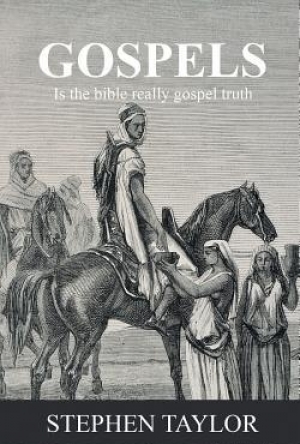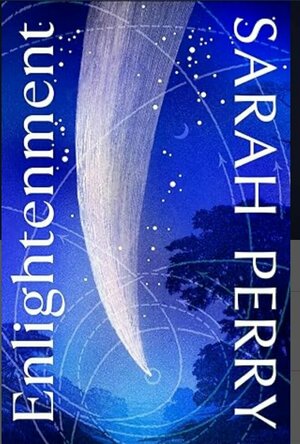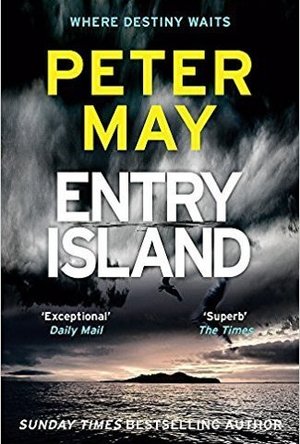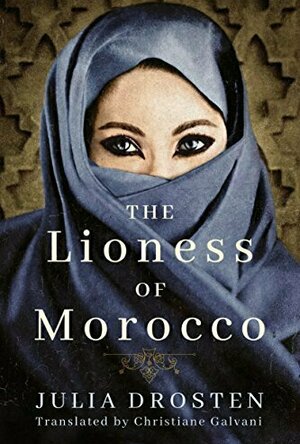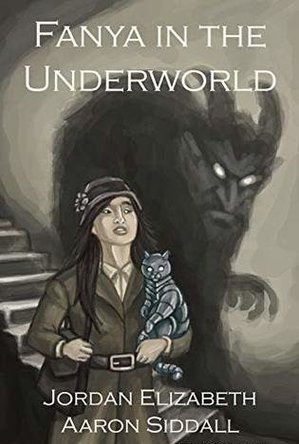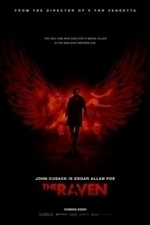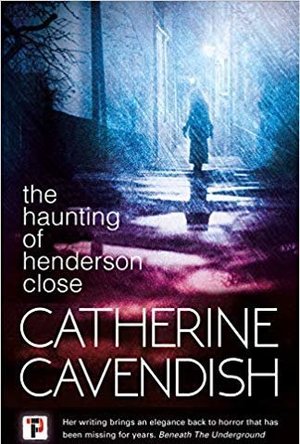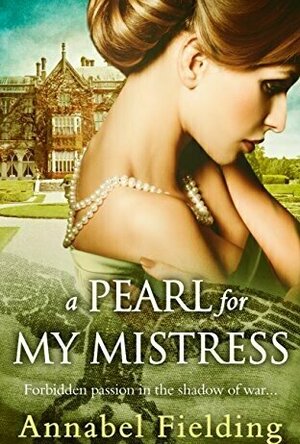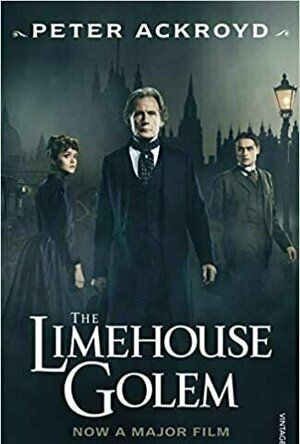Search
Search results
<i>I received this book for free through Goodreads First Reads.
Is the Bible really gospel truth?</i> This is the question the honourable, academic Robert Babcock aims to find out on his quest to find the earliest copies of the gospels in order to prove the reliability of the story of Jesus as recounted in the King James Bible. However, this is not the key focus of Stephen Taylor’s fictional novel, <i>Gospels</i>. The main character is the perfidious John Campbell-John, a rogue, imposter and swindler who flees 19th-century England in an attempt to escape from his debts.
John meets the magnanimous Robert in Venice and, despite being polar opposites, become firm friends. After being honest for the first time in his life, admitting to owing thousands of pounds in gambling debts, Robert offers John the opportunity to accompany him on his quest through the deserts of Egypt. John accepts and the pair finds themselves on an adventure of discovery and personal redemption.
John and Robert make an unlikely but excellent team. Robert’s knowledge of the Bible and ancient history is vital, however, John’s propensity for falsehoods and cunningness gets them out of a few scrapes and tricky situations. Nonetheless, it is difficult for John to give up his old ways and his insular behaviour threatens to get them in more trouble.
Fortunately, Robert’s humility begins to influence the young scoundrel, as does his penchant for historical artefacts. As the story progresses, John begins to leave his past behind and becomes interested in Robert’s work, learning new things about Egyptian culture and the origins of the Bible. However, when a new gospel comes to light that threatens the whole of Christianity, Robert does not know what to do; and only John can give him counsel.
John Campbell-John is a character that the author introduced in a previous book. However, the timelines are not sequential, therefore <i>Gospels</i> is a stand-alone novel. The time frame for this book needed to be set in 1835 to correspond with historical truths. Although Robert’s discovery of a Gospel of Thaddeus Jude is an invention of the author, the quest itself is based on the journeys of three 19th-century Bible hunters. Stephen Taylor has conducted an enormous amount of research, including the biographies of Robert Curzon, Constantin von Tischendorf and Émile Amélineau who, on separate occasions, sought the same knowledge as the fictional Robert Babcock.
Despite being titled <i>Gospels</i>, the novel, for the most part, focuses on John Campbell-John and his wicked ways. Through a first-person narrative, John explains his past, his betrayal of a friend, and his addiction to gambling. Initially, he has no qualms about his behaviour and acts only for himself and his selfish greed. Whilst Robert goes in search of knowledge, John goes on a journey of redemption, coming to terms with his previous wrongdoings. However, acknowledging these faults is not enough, he needs to turn away from these roguish ways.
It is disappointing that the narrative does not focus more on the gospels, both real and imagined. There was enormous scope for an in-depth look at the life of Jesus and the inconsistencies in the Bible. The fictitious Gospel of Thaddeus Jude evokes a similar reaction in Robert as the Non-Canonical Gospel of Thomas found in the 19th-century had on many devout Christians. There was so much potential with this direction of thought, however, the author passes over it in preference to the life of John Campbell-John.
Slow to begin but increasingly interesting as it progresses, <i>Gospels</i> is a book of many themes. History, both 19th-century and ancient; religion, although not a Christian story; and achievement and absolution combine together to produce a unique tale that takes the reader from the back alleys of London to the River Nile and the deserts of Sinai. A subtle clue in the prologue keeps readers alert as they await the conclusion of the adventure – an ending that ambiguously reveals whether John moves on from the follies of his past.
Is the Bible really gospel truth?</i> This is the question the honourable, academic Robert Babcock aims to find out on his quest to find the earliest copies of the gospels in order to prove the reliability of the story of Jesus as recounted in the King James Bible. However, this is not the key focus of Stephen Taylor’s fictional novel, <i>Gospels</i>. The main character is the perfidious John Campbell-John, a rogue, imposter and swindler who flees 19th-century England in an attempt to escape from his debts.
John meets the magnanimous Robert in Venice and, despite being polar opposites, become firm friends. After being honest for the first time in his life, admitting to owing thousands of pounds in gambling debts, Robert offers John the opportunity to accompany him on his quest through the deserts of Egypt. John accepts and the pair finds themselves on an adventure of discovery and personal redemption.
John and Robert make an unlikely but excellent team. Robert’s knowledge of the Bible and ancient history is vital, however, John’s propensity for falsehoods and cunningness gets them out of a few scrapes and tricky situations. Nonetheless, it is difficult for John to give up his old ways and his insular behaviour threatens to get them in more trouble.
Fortunately, Robert’s humility begins to influence the young scoundrel, as does his penchant for historical artefacts. As the story progresses, John begins to leave his past behind and becomes interested in Robert’s work, learning new things about Egyptian culture and the origins of the Bible. However, when a new gospel comes to light that threatens the whole of Christianity, Robert does not know what to do; and only John can give him counsel.
John Campbell-John is a character that the author introduced in a previous book. However, the timelines are not sequential, therefore <i>Gospels</i> is a stand-alone novel. The time frame for this book needed to be set in 1835 to correspond with historical truths. Although Robert’s discovery of a Gospel of Thaddeus Jude is an invention of the author, the quest itself is based on the journeys of three 19th-century Bible hunters. Stephen Taylor has conducted an enormous amount of research, including the biographies of Robert Curzon, Constantin von Tischendorf and Émile Amélineau who, on separate occasions, sought the same knowledge as the fictional Robert Babcock.
Despite being titled <i>Gospels</i>, the novel, for the most part, focuses on John Campbell-John and his wicked ways. Through a first-person narrative, John explains his past, his betrayal of a friend, and his addiction to gambling. Initially, he has no qualms about his behaviour and acts only for himself and his selfish greed. Whilst Robert goes in search of knowledge, John goes on a journey of redemption, coming to terms with his previous wrongdoings. However, acknowledging these faults is not enough, he needs to turn away from these roguish ways.
It is disappointing that the narrative does not focus more on the gospels, both real and imagined. There was enormous scope for an in-depth look at the life of Jesus and the inconsistencies in the Bible. The fictitious Gospel of Thaddeus Jude evokes a similar reaction in Robert as the Non-Canonical Gospel of Thomas found in the 19th-century had on many devout Christians. There was so much potential with this direction of thought, however, the author passes over it in preference to the life of John Campbell-John.
Slow to begin but increasingly interesting as it progresses, <i>Gospels</i> is a book of many themes. History, both 19th-century and ancient; religion, although not a Christian story; and achievement and absolution combine together to produce a unique tale that takes the reader from the back alleys of London to the River Nile and the deserts of Sinai. A subtle clue in the prologue keeps readers alert as they await the conclusion of the adventure – an ending that ambiguously reveals whether John moves on from the follies of his past.
ClareR (5884 KP) rated Enlightenment in Books
Mar 29, 2025
I sank into Enlightenment, and I really didn’t want to resurface. The way Enlightenment is written could be described as Dickens-esque perhaps, but whatever it is, it’s rich in the type of description that I truly love about reading. I would lose myself for an hour or so (or more!) taking my time over the story of Thomas Hart, Grace Macauley, the Baptist church and a 19th century female astronomer.
My heart ached for these characters, especially for Thomas who felt that he couldn’t live an authentic, true life, because he would be rejected from his church. He’s a lovely man, who fills his time with the search for the astronomer, and his love for Grace Macauley.
Grace is a young girl, learning to live the life she wants to live and not that dictated by her father and her church. Faith plays a big role in this novel: both religious faith and the faith we have in others. Grace and Thomas have a disagreement and have to find their way back to one another. Despite the age difference, they are true friends.
I didn’t think I could find astronomy as interesting as I did, but the writing teamed with a ghostly astronomer and Thomas, certainly helped.
A beautiful book!
My heart ached for these characters, especially for Thomas who felt that he couldn’t live an authentic, true life, because he would be rejected from his church. He’s a lovely man, who fills his time with the search for the astronomer, and his love for Grace Macauley.
Grace is a young girl, learning to live the life she wants to live and not that dictated by her father and her church. Faith plays a big role in this novel: both religious faith and the faith we have in others. Grace and Thomas have a disagreement and have to find their way back to one another. Despite the age difference, they are true friends.
I didn’t think I could find astronomy as interesting as I did, but the writing teamed with a ghostly astronomer and Thomas, certainly helped.
A beautiful book!
Awix (3310 KP) rated Entry Island in Books
Mar 27, 2019
Not my usual sort of thing, but recommended to (more like thrust upon) me by someone whose taste in books is usually interesting. Not necessarily in this case, though: a competent mash-up of a contemporary police procedural thriller with a windblown historical romance set during the Highland clearances (younger readers, ask your dad): a Canadian cop starts having flashbacks (kind of) to his ancestor's life while investigating a murder on a remote island; he feels certain he knows the prime suspect, although she and he have never met before...
The structure of the book certainly works in its favour: whenever you get bored of the whodunnit, the switch to goings-on in the 19th century Hebrides is welcome, and vice versa. And, fair's fair, the story does pick up pace and interest in the final third after a slightly stodgy opening. However, neither the plotting nor the writing are what I'd call inspired; workmanlike is the word that springs to mind. Passes the time inoffensively but unlikely to linger in the memory.
The structure of the book certainly works in its favour: whenever you get bored of the whodunnit, the switch to goings-on in the 19th century Hebrides is welcome, and vice versa. And, fair's fair, the story does pick up pace and interest in the final third after a slightly stodgy opening. However, neither the plotting nor the writing are what I'd call inspired; workmanlike is the word that springs to mind. Passes the time inoffensively but unlikely to linger in the memory.
BookInspector (124 KP) rated The Lioness of Morocco in Books
Sep 24, 2020
This is a mesmerising story of 2 generation’s lives between London and Mogador, Morocco. The first part tells and incredible story of Sibylla, and her journey through life in new country with new beliefs and traditions. Also, her adjustment and fight for what life throws at her. Life doesn’t really spare her. The relationship with her husband lacks love and understanding, so when handsome acquaintance comes along and sweeps of her feet, she thinks, she finds her love again. But it would be too perfect, and let’s not forget, the plot of this story is happening in Morocco. The second part is more about Sibylla’s children and their way through life. Both parts are very well combined together and make an incredible story of adjustment, love, betrayal. The characters of this book are very diverse, and there is huge variety to choose from in this publication. I always admire strong women characters, who take charge in difficult situations. Sibylla is like that, strong, ambitious and she doesn’t give up easily.
I love reading about different countries and cultures, that’s why all the information about harems was very mesmerising and exotic to me. I loved to see, how women treated each other and their surrounding in Arab country in 19th century. The writing style used in this book was not very easy for me, as it’s written in quite refined and sophisticated manner. Even though it’s quite hard to read this type of writing for me, it gives me a great feeling of the spirit, which the novel should portray. I really loved that all the main characters views and feelings were taken into consideration, and expressed in the book; it was not the story just from one characters perspective. I was really pleased that every chapter had something happening. There were many twists and drama in the book, and it made it really appealing. However, there were few places where plot was quite predictable. The ending was really enjoyable and nicely concluded the story. To conclude, if you would like something exotic, educating, historical and very thorough going book, with strong characters and rebellious women, this is a must read for you.
Was given a review copy for honest opinion about this book.
I love reading about different countries and cultures, that’s why all the information about harems was very mesmerising and exotic to me. I loved to see, how women treated each other and their surrounding in Arab country in 19th century. The writing style used in this book was not very easy for me, as it’s written in quite refined and sophisticated manner. Even though it’s quite hard to read this type of writing for me, it gives me a great feeling of the spirit, which the novel should portray. I really loved that all the main characters views and feelings were taken into consideration, and expressed in the book; it was not the story just from one characters perspective. I was really pleased that every chapter had something happening. There were many twists and drama in the book, and it made it really appealing. However, there were few places where plot was quite predictable. The ending was really enjoyable and nicely concluded the story. To conclude, if you would like something exotic, educating, historical and very thorough going book, with strong characters and rebellious women, this is a must read for you.
Was given a review copy for honest opinion about this book.
Hazel (1853 KP) rated The Orphan Train in Books
Dec 17, 2018
<i>I received this book for free through Goodreads First Reads.</i>
Steve Brigman’s historical novel <i>The Orphan Train</i> takes place in the Missouri Ozarks during the late 19th and early 20th century. Large groups of orphaned children were transported from New York across to the west where other families adopted them. Ten-year-old James was one of these children and this is his story.
Initially the title implied that the story would be about the orphan train itself or at least the life of James as a child however it was his adult life that the book was focused on. The novel opened with the train journey and James meeting his new parents, Clara and Joshua Crawford but this, as well as his remaining childhood on the Crawford ranch was over in a short amount of chapters. By this point both his parents had died in accidents before James had reached the age of twenty. The story goes on to show how James improved and built on the ranch with the help of friend and employee Luke as well as Henry, an older black man who he let live on the ranch with is daughter and grandchildren – something that sparked prejudices in town.
James soon finds himself a wife and the remainder of the book recounts their life together. I admit that I was a little disappointed not to read more about James’ childhood but I began to enjoy reading about the love he had for his wife and his friendships with those living on the ranch.
One issue with this novel is that it lacks much of a climax. I was forever waiting for something bad to happen as it all seemed too good to be true and slightly predictable. That said, it was a good read and it was easy to become attached to the characters.
Steve Brigman’s historical novel <i>The Orphan Train</i> takes place in the Missouri Ozarks during the late 19th and early 20th century. Large groups of orphaned children were transported from New York across to the west where other families adopted them. Ten-year-old James was one of these children and this is his story.
Initially the title implied that the story would be about the orphan train itself or at least the life of James as a child however it was his adult life that the book was focused on. The novel opened with the train journey and James meeting his new parents, Clara and Joshua Crawford but this, as well as his remaining childhood on the Crawford ranch was over in a short amount of chapters. By this point both his parents had died in accidents before James had reached the age of twenty. The story goes on to show how James improved and built on the ranch with the help of friend and employee Luke as well as Henry, an older black man who he let live on the ranch with is daughter and grandchildren – something that sparked prejudices in town.
James soon finds himself a wife and the remainder of the book recounts their life together. I admit that I was a little disappointed not to read more about James’ childhood but I began to enjoy reading about the love he had for his wife and his friendships with those living on the ranch.
One issue with this novel is that it lacks much of a climax. I was forever waiting for something bad to happen as it all seemed too good to be true and slightly predictable. That said, it was a good read and it was easy to become attached to the characters.
Hazel (1853 KP) rated Fanya in the Underworld in Books
Dec 6, 2018
I was sent a copy of this book by the author in exchange for an honest review.
Author Jordan Elizabeth has written many stories for young adults of all sorts of genres. With Fanya in the Underworld, Jordan tackles steampunk fiction with elements of fantasy and the paranormal. Set in Alaska during the 19th century when the state was still owned by Tsarist Russia, humans rely on steamtech and spirit magic to fuel their industrious cities.
The story begins shortly after the death of Fanya's father, leaving her as heir to his estate. Unfortunately, her step-mother has overruled her right to her inheritance. By making a fuss to the council, Fanya inadvertently puts both her life and the life of her younger sister in danger. Desperate to protect her sister from the clutches of a mysterious Englishman, Fanya finds herself in the wilderness where the indigenous, magical folk live. Despite having lived in a city her entire life, Fanya soon discovers she has far more in common with the people in the untamed wild.
Whilst a work of imaginative fiction, Fanya in the Underworld works with the historical truth about settlers moving to Alaska, Canada and the United States. Those from Europe who travelled to North America drove out the indigenous folk, destroyed their land and culture and deemed them to be lesser beings. The same has occurred in this novel in which the natives are banned from the cities, treated like animals and even murdered just for being who they are.
By caring so much about her sister, Fanya discovers the truth about the way the cities developed and is shocked by the revelation. Although her sister is at the forefront of her mind, her actions cause huge changes in Alaska resulting in a favourable, although unpredictable, conclusion.
Jordan Elizabeth draws the reader into the steampunk world of Tsarist Alaska. With the aid of illustrations by Aaron Siddal, Fanya in the Underworld is an exciting story unlike any written before. Unique characters, unique scenarios, and a fantastic ending, what more could anyone want?
Author Jordan Elizabeth has written many stories for young adults of all sorts of genres. With Fanya in the Underworld, Jordan tackles steampunk fiction with elements of fantasy and the paranormal. Set in Alaska during the 19th century when the state was still owned by Tsarist Russia, humans rely on steamtech and spirit magic to fuel their industrious cities.
The story begins shortly after the death of Fanya's father, leaving her as heir to his estate. Unfortunately, her step-mother has overruled her right to her inheritance. By making a fuss to the council, Fanya inadvertently puts both her life and the life of her younger sister in danger. Desperate to protect her sister from the clutches of a mysterious Englishman, Fanya finds herself in the wilderness where the indigenous, magical folk live. Despite having lived in a city her entire life, Fanya soon discovers she has far more in common with the people in the untamed wild.
Whilst a work of imaginative fiction, Fanya in the Underworld works with the historical truth about settlers moving to Alaska, Canada and the United States. Those from Europe who travelled to North America drove out the indigenous folk, destroyed their land and culture and deemed them to be lesser beings. The same has occurred in this novel in which the natives are banned from the cities, treated like animals and even murdered just for being who they are.
By caring so much about her sister, Fanya discovers the truth about the way the cities developed and is shocked by the revelation. Although her sister is at the forefront of her mind, her actions cause huge changes in Alaska resulting in a favourable, although unpredictable, conclusion.
Jordan Elizabeth draws the reader into the steampunk world of Tsarist Alaska. With the aid of illustrations by Aaron Siddal, Fanya in the Underworld is an exciting story unlike any written before. Unique characters, unique scenarios, and a fantastic ending, what more could anyone want?
Gareth von Kallenbach (980 KP) rated The Raven (2012) in Movies
Aug 7, 2019
In this dark thriller, Edgar Allan Poe (John Cusack) is forced to assist a young detective to track down a mad serial killer when it becomes obvious that the inspiration for the murders are Poe’s own literary works.
This fictionalized account of the last days of Edgar Allan Poe’s life begins with the brutal murder of a mother and daughter. Inspector Emmett Fields (Luke Evans) finds something oddly familiar about the crime scene and his research leads him to a story written by Poe. A struggling writer on his way to becoming the local drunkard, Poe is brought in for questioning just as another murder is discovered, again one that mirrors one of the author’s grisly stories.
Because it’s his stories that the murderer’s recreating, Poe becomes Field’s reluctant assistant in hunting down the serial killer. But when it appears Poe’s fiancee (Alice Eve) may become the murderer’s next victim, the stakes become even greater, and now it’s the murderer who’s inspiring the writer and inventor of the detective story genre to do some of his best sleuthing work.
While the cat-and-mouse element of the movie kept me in suspense, the movie itself was void of the dark drama one would expect of a movie about Edgar Allen Poe, even a fictionalized account. Even with the detailed attention to the look of 19th century Baltimore, it wasn’t enough to help Cusack’s lightweight portrayal of Poe. Many times I wondered if Evans would have been better cast as the grim, moody writer.
What I actually appreciated most about the movie was the lyrical dialogue, the clever, poetic word usage of yesteryear. Although, there were some minor slips that made me wonder if the scriptwriter or actor forgot which century they were in. I did not have high expectations for this movie, so it truly did not disappoint. With a 111 minute runtime, “The Raven” has just enough mystery to keep one guessing, however it felt a bit rushed at the end. Up against more lively competition this weekend, this may be one to save for a DVD rental.
This fictionalized account of the last days of Edgar Allan Poe’s life begins with the brutal murder of a mother and daughter. Inspector Emmett Fields (Luke Evans) finds something oddly familiar about the crime scene and his research leads him to a story written by Poe. A struggling writer on his way to becoming the local drunkard, Poe is brought in for questioning just as another murder is discovered, again one that mirrors one of the author’s grisly stories.
Because it’s his stories that the murderer’s recreating, Poe becomes Field’s reluctant assistant in hunting down the serial killer. But when it appears Poe’s fiancee (Alice Eve) may become the murderer’s next victim, the stakes become even greater, and now it’s the murderer who’s inspiring the writer and inventor of the detective story genre to do some of his best sleuthing work.
While the cat-and-mouse element of the movie kept me in suspense, the movie itself was void of the dark drama one would expect of a movie about Edgar Allen Poe, even a fictionalized account. Even with the detailed attention to the look of 19th century Baltimore, it wasn’t enough to help Cusack’s lightweight portrayal of Poe. Many times I wondered if Evans would have been better cast as the grim, moody writer.
What I actually appreciated most about the movie was the lyrical dialogue, the clever, poetic word usage of yesteryear. Although, there were some minor slips that made me wonder if the scriptwriter or actor forgot which century they were in. I did not have high expectations for this movie, so it truly did not disappoint. With a 111 minute runtime, “The Raven” has just enough mystery to keep one guessing, however it felt a bit rushed at the end. Up against more lively competition this weekend, this may be one to save for a DVD rental.
Billie Wichkan (118 KP) rated The Haunting of Henderson Close in Books
May 22, 2019
The Haunting of Henderson Close
Hannah has relocated to Edinburgh and now works as a performing tour guide regaling tourists with the goings on in the spooky derelict Henderson Close. Together with colleagues they bring the past to life as they play the parts of real people who lived there and spin tales of the spooky and historical past, some really gruesome. But then she starts to see shadows, she has flashes where she feels weird and, well, has some really rather scary experiences. But she's not alone, one of the other guides has experienced similar and then some of the tourists also start to see things. What is happening? Are the legends and stories of what went before coming back? Who are the people that Hannah keeps seeing, and what do they really want?
I was intrigued by the classification of The Haunting of Henderson Close as a horror, mystery and thriller novel as these are my favourites.
I loved all the hints at ghosts and supernatural activity but sadly it all got a bit confusing for me as it progressed. The flashbacks and present just seemed to clash and not move seamlessly together. At times I felt possibly the author meant for the book to be more of a Victorian mystery rather than supernatural.
The use of location was one of the main strengths of the book, as the descriptions of 19th century Edinburgh were detailed and made it easy to imagine just what Victorian Scotland used to look like; really amazing and descriptive.
The ending I found a bit lacking as I had an idea built u in my of something climatic and it wasn’t.
The story itself intrigued me, the setting especially; all in all, a story that kept my attention nicely throughout and left me mostly satisfied at its conclusion.
My thanks go to the Publisher and Netgalley for the chance to read this book.
Hannah has relocated to Edinburgh and now works as a performing tour guide regaling tourists with the goings on in the spooky derelict Henderson Close. Together with colleagues they bring the past to life as they play the parts of real people who lived there and spin tales of the spooky and historical past, some really gruesome. But then she starts to see shadows, she has flashes where she feels weird and, well, has some really rather scary experiences. But she's not alone, one of the other guides has experienced similar and then some of the tourists also start to see things. What is happening? Are the legends and stories of what went before coming back? Who are the people that Hannah keeps seeing, and what do they really want?
I was intrigued by the classification of The Haunting of Henderson Close as a horror, mystery and thriller novel as these are my favourites.
I loved all the hints at ghosts and supernatural activity but sadly it all got a bit confusing for me as it progressed. The flashbacks and present just seemed to clash and not move seamlessly together. At times I felt possibly the author meant for the book to be more of a Victorian mystery rather than supernatural.
The use of location was one of the main strengths of the book, as the descriptions of 19th century Edinburgh were detailed and made it easy to imagine just what Victorian Scotland used to look like; really amazing and descriptive.
The ending I found a bit lacking as I had an idea built u in my of something climatic and it wasn’t.
The story itself intrigued me, the setting especially; all in all, a story that kept my attention nicely throughout and left me mostly satisfied at its conclusion.
My thanks go to the Publisher and Netgalley for the chance to read this book.
BookInspector (124 KP) rated A Pearl for My Mistress in Books
Sep 24, 2020
I would like to begin this review by saying that I really loved the cover of this book, it looks pleasant and very sophisticated, another thing which intrigued me, was the lesbian relationship in 1930th England.
The characters in this novel are very interesting, sophisticated and at the same time very believable and down to earth. The whole book was mainly told from Lady Lucy’s, Hester’s (the maid) and Sophie’s (Hester’s sister) perspectives. I really liked that author chose multiple perspectives, it allowed me to have a better insight into characters personalities and made the whole story more indulging. My favourite persona in this book was Hester. I liked her simplicity, pureness and adventurous heart.
The narrative of the book is filled with historical knowledge and politics. It was very clearly visible that author has a passion for history and she has done a great research for this novel. For me it wasn't a very easy read, there are a lot of things happening in this novel and a lot of politics involved, because of that I had to keep my concentration going to understand what was going on. However, I really enjoyed all the details which author shared about aristocratic life, their struggles and wish of Independence. I also loved the insight into maids world in that period, as most of the books I read was mostly set in the 19th century, and it was nice to compare how it changed during the time.
The writing style of this book is very rich and elegant, it reflected that particular era very nicely, and I felt the spirit of 1930th through the pages. The chapter length was quite long to my liking, even though it was divided into smaller parts. (Well, what can I say, I love short chapters…) The ending of the book concluded the book really nicely but still left me guessing where life will take Hester. So to conclude, it is a very interesting book about aristocrats and their lifestyle between the wars in England, filled with secrets, manipulations, and fear or support of new regiment. I would strongly recommend this book to all historical fiction readers and people who like politics. Enjoy :)
Was given this book by publisher and NetGalley for an honest review.
The characters in this novel are very interesting, sophisticated and at the same time very believable and down to earth. The whole book was mainly told from Lady Lucy’s, Hester’s (the maid) and Sophie’s (Hester’s sister) perspectives. I really liked that author chose multiple perspectives, it allowed me to have a better insight into characters personalities and made the whole story more indulging. My favourite persona in this book was Hester. I liked her simplicity, pureness and adventurous heart.
The narrative of the book is filled with historical knowledge and politics. It was very clearly visible that author has a passion for history and she has done a great research for this novel. For me it wasn't a very easy read, there are a lot of things happening in this novel and a lot of politics involved, because of that I had to keep my concentration going to understand what was going on. However, I really enjoyed all the details which author shared about aristocratic life, their struggles and wish of Independence. I also loved the insight into maids world in that period, as most of the books I read was mostly set in the 19th century, and it was nice to compare how it changed during the time.
The writing style of this book is very rich and elegant, it reflected that particular era very nicely, and I felt the spirit of 1930th through the pages. The chapter length was quite long to my liking, even though it was divided into smaller parts. (Well, what can I say, I love short chapters…) The ending of the book concluded the book really nicely but still left me guessing where life will take Hester. So to conclude, it is a very interesting book about aristocrats and their lifestyle between the wars in England, filled with secrets, manipulations, and fear or support of new regiment. I would strongly recommend this book to all historical fiction readers and people who like politics. Enjoy :)
Was given this book by publisher and NetGalley for an honest review.
BookInspector (124 KP) rated The Limehouse Golem in Books
Sep 24, 2020
The blurb gives out all the necessary information about this book, leaving some mystery for the reader to figure out. The star of this novel is Lizzie Cree, an actress and a wife of well-known reporter John Cree. This novel is told from multiple perspectives: Lizzie’s life story, “Limehouse Golem’s” thoughts during the killings, and other character’s views and life stories. The most interesting to me was Lizzie’s life story, I think it was the most intriguing, complex part of this novel. I am really grateful that Peter Ackroyd added the murderer’s thoughts to this book. Even though they were really graphic, I always love to have an insight into what’s happening in a psychopath’s head. There is a wide variety of characters to choose from in this book, and I think that everybody can find their favourite. My pick would be Lizzie, she is such a well composed and intriguing character!
The narrative of this novel was very well written and researched. I did enjoy the story which author was sharing with the reader, however, there were many philosophical parts in this book, which I found boring and unnecessary. It reminded me of all the dull books I had to read while in school, so I just skim read those parts. 😦 I would like to throw in a disclaimer, that there are graphic violent parts in this book, and it is not suitable for sensitive readers. 😉
The writing style of this book is impeccable. Peter Ackroyd is a master of his craft and truly gifted writer. This novel was first published in 1994, but it feels like it was written in the 19th century. I could clearly see the author’s knowledge in this book because it was shining through the pages. The language used in this novel was very sophisticated but not very difficult to read, and the chapters where decent length, so it did not leave me bored. I really enjoyed the ending of this novel, I think it was well deserved and rounded up the story very nicely.
The film actually surprised me, it had a completely different approach to the whole story and told it through Inspector Kildare’s perspective. In the book, the whole police investigation was very vague, so it was a real surprise to see this approach, and I didn’t really mind it. The acting was marvellous and Mr D. Booth (Dan Leno) was absolutely amazing. He had the charisma and the skill to be a star of this movie. The whole movie was not a full representation of the book, they used some parts from the book and amended it to fit their story, but I liked it nevertheless. This movie is not suitable for children under 15, as it has some really gross scenes in there.
So to conclude, this book is very well written and amusing read, with well rounded and charismatic characters, and the narrative is twisty and always changing, keeping the reader interested. I do recommend to experience Lizzie’s journey and to watch the film afterwards. They do compliment each other, offering different perspectives and different interpretations, so give it a try and I hope you will enjoy it 🙂
The narrative of this novel was very well written and researched. I did enjoy the story which author was sharing with the reader, however, there were many philosophical parts in this book, which I found boring and unnecessary. It reminded me of all the dull books I had to read while in school, so I just skim read those parts. 😦 I would like to throw in a disclaimer, that there are graphic violent parts in this book, and it is not suitable for sensitive readers. 😉
The writing style of this book is impeccable. Peter Ackroyd is a master of his craft and truly gifted writer. This novel was first published in 1994, but it feels like it was written in the 19th century. I could clearly see the author’s knowledge in this book because it was shining through the pages. The language used in this novel was very sophisticated but not very difficult to read, and the chapters where decent length, so it did not leave me bored. I really enjoyed the ending of this novel, I think it was well deserved and rounded up the story very nicely.
The film actually surprised me, it had a completely different approach to the whole story and told it through Inspector Kildare’s perspective. In the book, the whole police investigation was very vague, so it was a real surprise to see this approach, and I didn’t really mind it. The acting was marvellous and Mr D. Booth (Dan Leno) was absolutely amazing. He had the charisma and the skill to be a star of this movie. The whole movie was not a full representation of the book, they used some parts from the book and amended it to fit their story, but I liked it nevertheless. This movie is not suitable for children under 15, as it has some really gross scenes in there.
So to conclude, this book is very well written and amusing read, with well rounded and charismatic characters, and the narrative is twisty and always changing, keeping the reader interested. I do recommend to experience Lizzie’s journey and to watch the film afterwards. They do compliment each other, offering different perspectives and different interpretations, so give it a try and I hope you will enjoy it 🙂
